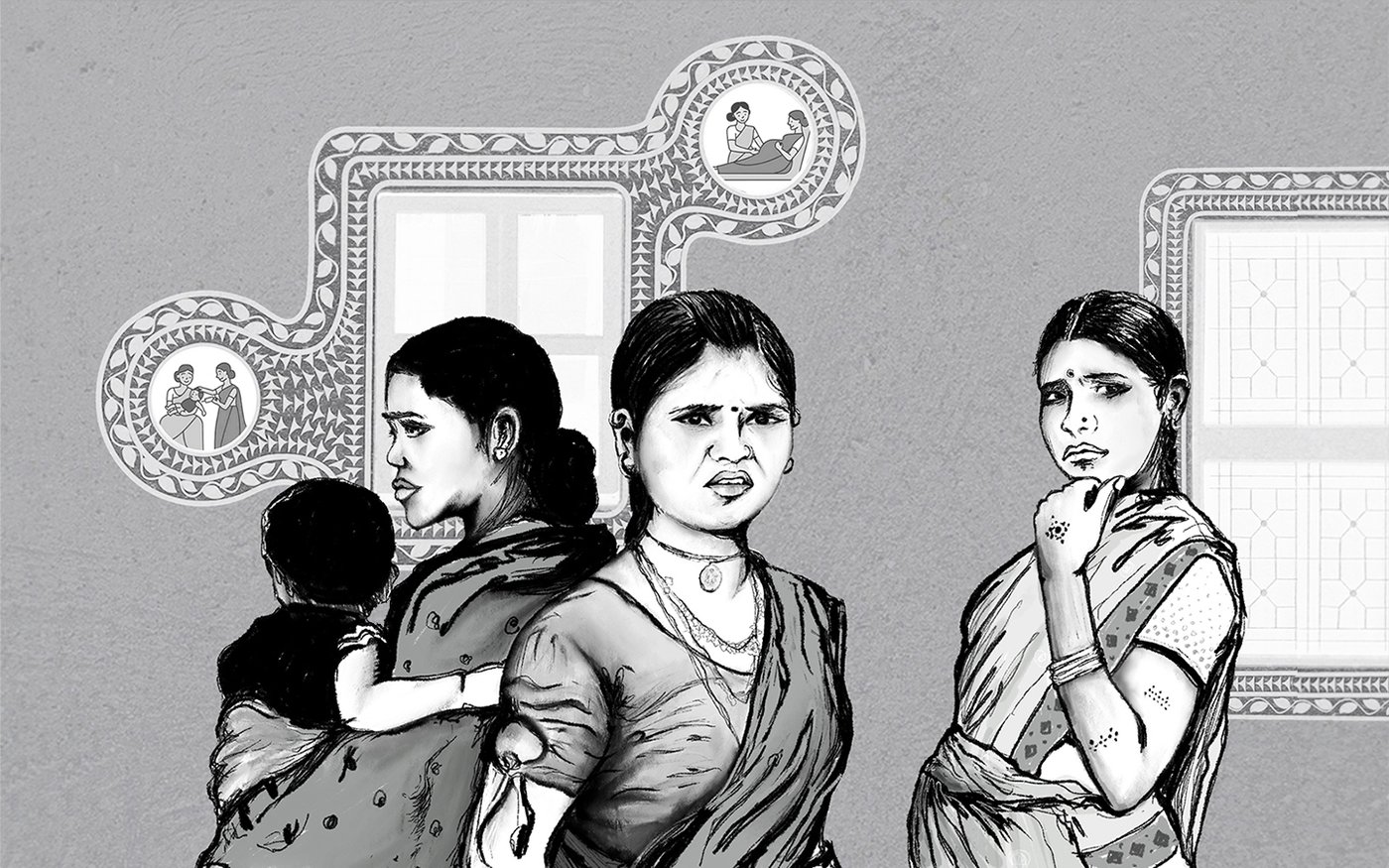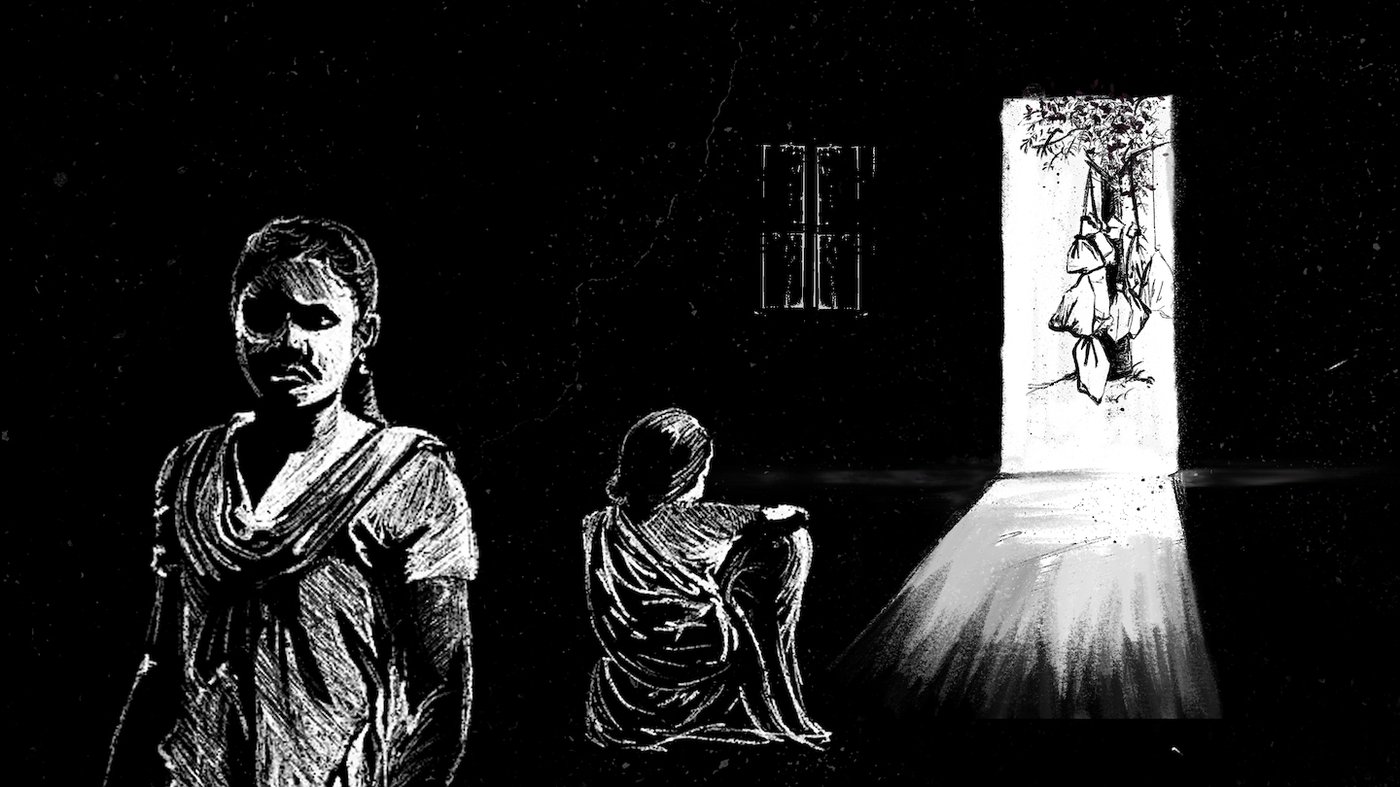With the aim of putting a spotlight on the issue of women’s reproductive and sexual health to generate a much-needed conversation in 2020, People’s Archive of Rural India (PARI) worked in collaboration with Population Foundation of India (PFI) to publish a series which gives women’s voices from rural India a platform.
As PARI puts it, “These are PARI stories from across India, an ongoing series that covers the wide arc of women’s reproductive health – the stigma around infertility, the emphasis on female sterilisation, the lack of ‘male engagement’ in family planning, inadequate rural healthcare systems that too are out of reach for many, unqualified medical practitioners and dangerous childbirths, discrimination due to menstruation, the preference for sons – and more. Stories that speak of a wide range of health-related prejudices and practices, people and communities, gender and rights, and the everyday struggles and occasional small victories of women in rural India.”
Over the course of the year, since February onwards, 16 stories narrating the experiences of women across the country have been published, and each article was accompanied by a cover illustration – which have been reproduced below.
Read the full series on PARI here, and on the PFI website here.
A coerced sterilisation, a senseless death

Bhavna Suthar of Rajasthan’s Bansi village died after a sterilisation procedure at a ‘camp’ last year that flouted norms and gave her no time to consider options. Her husband Dinesh is still seeking justice. Illustration: Labani Jangi/People’s Archive of Rural India
‘Last year, only one man agreed to a vasectomy’

‘Male engagement’ in family planning is a buzzword, but the Vikas Mitras and ASHA workers of Bihar report little success in convincing men to undergo sterilisation, and contraception continues to be left to women. Illustration: Priyanka Borar/People’s Archive of Rural India
‘The doctors advised a womb removal surgery’

The sexual and reproductive health rights of intellectually disabled women are often violated through forced hysterectomies. But in Maharashtra’s Wadi village, Malan More is lucky to have had the support of her mother. Illustration: Priyanka Borar/People’s Archive of Rural India
‘Clients even in my ninth month of pregnancy’

With four miscarriages, an alcoholic husband, and the loss of her factory job, Delhi-based Honey turned to sex work when pregnant a fifth time, and has lived with an STD since. Now, in lockdown, she struggles to earn. Illustration: Antara Raman/People’s Archive of Rural India
‘After some 12 children it stops on its own’

In Haryana’s Biwan village, access to contraception among the Meo Muslims is uphill due to cultural factors, inaccessible health services and indifferent providers – trapping women in a cycle of childbirth. Illustration: Priyanka Borar/People’s Archive of Rural India
‘How did my wife develop an infection?’

An infection after a sterilisation set off three years of pain, a bewildering runaround of hospitals, growing debt, and eventually a hysterectomy for 27-year-old Susheela Devi of Rajasthan’s Dausa district. Illustration: Labani Jangi/People’s Archive of Rural India
‘End of bother’ – Neha gets a nasbandi

A ‘nasbandi day’ has replaced sterilisation camps after a 2016 SC order, but it’s still mainly women who undergo surgeries – and many in UP do so without any other choice of modern contraception methods. Illustration: Priyanka Borar/People’s Archive of Rural India
Locked-down schoolgirls: no basic needs, period

With schools shut, girls from poor families in Uttar Pradesh’s Chitrakoot district have lost access to free sanitary napkins and are turning to risky options. In UP alone, the numbers of such girls runs to millions. Illustration: Priyanka Borar/People’s Archive of Rural India
‘Now my goats are like my children’

Bhil women from the Dhadgaon region in Maharashtra’s Nandurbar district struggle with stigma, social exclusion and a rural healthcare system that fails to provide effective treatment for infertility. Illustration: Priyanka Borar/People’s Archive of Rural India
‘The doctor says my bones have become hollow’

After a lifetime of illness and surgeries, including a uterus removal, Bibabai Loyare of Hadashi village in Pune district is bent and sunken. Still, she continues to do farm work and looks after a paralytic husband. Illustration: Priyanka Borar/People’s Archive of Rural India
‘My kaat (uterus) keeps coming out’

Bhil women with a prolapsed uterus cannot access medical facilities in Maharashtra’s Nandurbar district. They struggle with no road or mobile connectivity, unrelenting hard labour and excruciating pain. Illustration: Priyanka Borar/People’s Archive of Rural India
‘They are just given a pill and sent away’

The well-equipped primary health centres in Chhattisgarh’s Narayanpur district remain out of reach for many Adivasi women, who turn to unqualified practitioners for potentially dangerous abortions and deliveries. Illustration: Priyanka Borar/People’s Archive of Rural India
Counting cows, not rural health indicators

Underpaid and over-burdened with endless surveys, reports and tasks, Sunita Rani and other ASHA workers of Haryana’s Sonipat district struggle to attend to the reproductive health needs of rural families. Illustration: Priyanka Borar/People’s Archive of Rural India
In the Nilgiris, an inheritance of malnutrition

Mothers with almost no haemoglobin, two-years-olds weighing 7 kilos, alcoholism, low incomes and falling access to the forest are spurring acute malnutrition amongst Adivasi women in Gudalur, Tamil Nadu. Illustration: Priyanka Borar/People’s Archive of Rural India
Koovalapuram’s curious guesthouse

In Koovalapuram and four other villages of Madurai district, menstruating women continue to be isolated in ‘guesthouses’. No one challenges the discrimination, fearing the wrath of the gods and humans. Illustration: Priyanka Borar/People’s Archive of Rural India
‘For that grandson, we had four children’

The women of Harsana Kalan village in Haryana, around 40 kilometres from Delhi, describe their struggles to achieve some control over their own lives and reproductive choices in the face of male hostility. Illustration: Priyanka Borar/People’s Archive of Rural India
Priyanka Borar is a new media artist experimenting with technology to discover new forms of meaning and expression. She designs experiences for learning and play, juggles with interactive media, and also feels at home with traditional pen and paper.
Antara Raman is a recent graduate of Visual Communication from Srishti Institute of Art, Design and Technology, Bengaluru. Conceptual art and storytelling in all its forms are the biggest influences on her illustration and design practice.
Labani Jangi, originally from a small town of West Bengal’s Nadia district, is working towards a PhD degree on Bengali labour migration at the Centre for Studies in Social Sciences, Kolkata. She is a self-taught painter and loves to travel.
PARI and CounterMedia Trust’s nationwide reporting project on adolescent girls and young women in rural India is part of a Population Foundation of India-supported initiative to explore the situation of these vital yet marginalised groups, through the voices and lived experience of ordinary people.
The series was originally published in the People’s Archive of Rural India. It has also been published on the Population Foundation of India website.
Want to republish this article? Please write to zahra@ruralindiaonline.org with a cc to namita@ruralindiaonline.org
